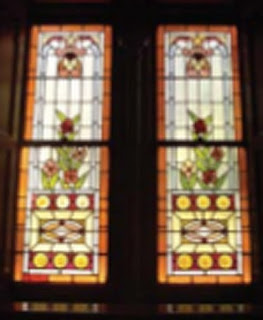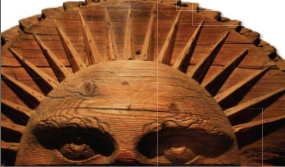

Because 1880 was designated as a “Jubilee” year (fiftieth anniversary of the founding of the Church), the builders incorporated the star of David in the structure, reminiscent of the Israelite jubilee celebrations in the Old Testament. As was the custom in Old Testament times, debts were forgiven and a great jubilee celebration was held (see Leviticus 25:8–10). In 1980 the Assembly Hall was closed for renovations, and when the doors were reopened in 1983 the building had hardwood flooring, elegant draperies, and a ceiling with gold-leaf designs.

During construction of the Assembly Hall, Charles J. Thomas was appointed as the first official guide on Temple Square. In 1876 he greeted and gave tours to four thousand visitors. Today hundreds of guides take millions of visitors on tours of Temple Square.

Seagull Monument
In 1848, a year after the pioneers settled in Salt Lake, hordes of crickets began to devour their first crops. The situation was dire, but a miracle occurred when flocks of seagulls from the Great Salt Lake flew in and began to feast upon the crickets. An eyewitness, pioneer Priddy Meeks, reported, “They would eat crickets and throw them up again and fill themselves again and right away throw them up again.” For over two weeks, the gulls came until the crickets were effectively eliminated. Utah citizens designated the seagull as the state bird, and in 1912 the Church commissioned a monument to the seagull on Temple Square celebrating this miracle.The Miracle of the Gulls Monument was designed and executed by Mahonri M. Young, grandson of Brigham Young. His work is in more than fifty museums, including the Metropolitan Museum of Art in New York City and the rotunda of the National Capitol Building.
-Robert L Hall
There are forty of these stained glass windows around the Assembly Hall.
Shown are sego lilies, whose roots saved the pioneers from starvation in the early years.
Robert L. Hall

Organ inside the Assembly Hall
Parts of the original Joseph Ridges organ in the “Old Tabernacle”
were used in an expanded organ installed in the Assembly Hall in the 1880s.
Gary G. Memorial
___________________________________________________________________
___________________________________________________________________
Brigham Young University Religious Education presents
Hallowed Ground Sacred Journeys
Featuring BYU Religious Educators teaching about sites significant in
The Church of Jesus Christ of Latter-day Saints
For more information, or to visit our interactive web site with dozens of additional sites to explore,
please visit VirtualTours.BYU.edu
Hallowed Ground Sacred Journeys
is a co-production of
This blog is a public service of The Watchmen Institute
and is distributed by B.U.M.P. LTD.
All Rights Reserved





















